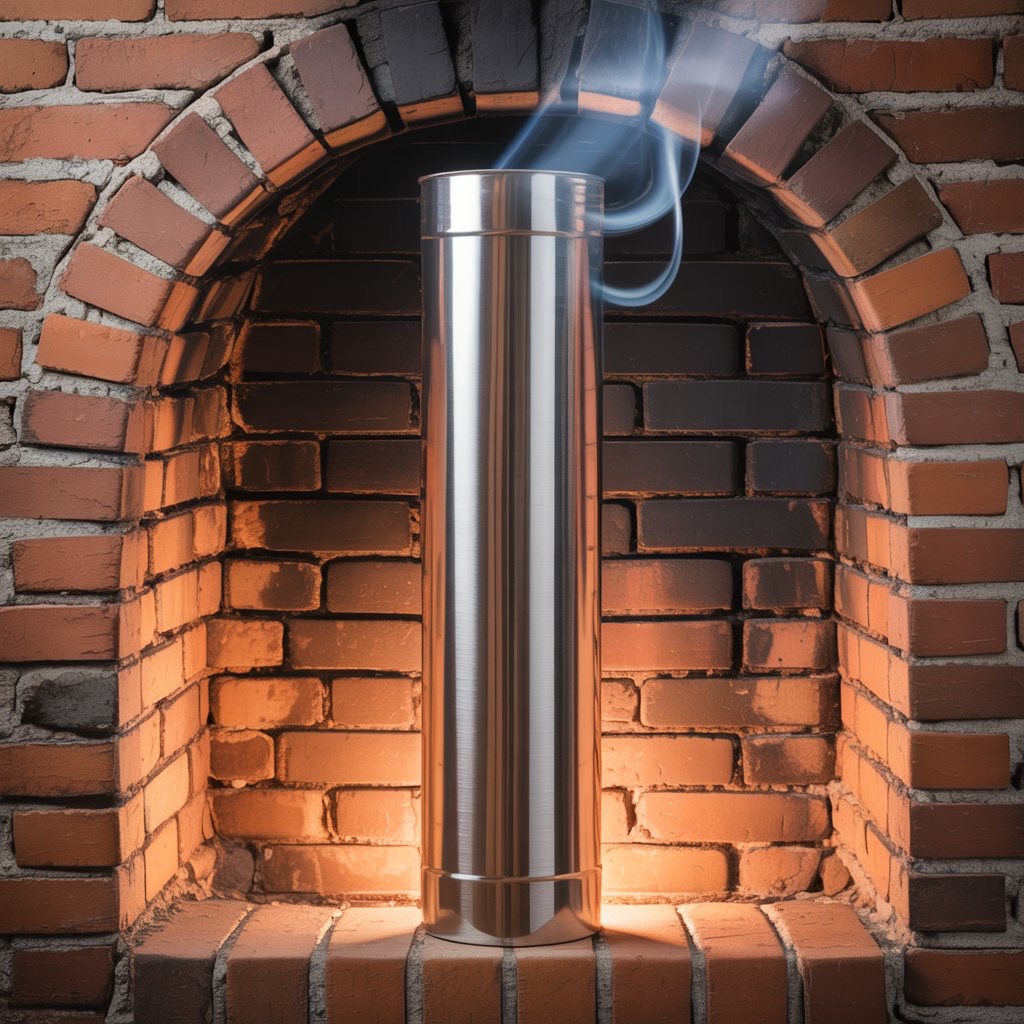
At Berkeley Chimney Sweep, we know that maintaining a safe and efficient chimney is a top concern for every homeowner. One of the most common issues we encounter in Berkeley homes is creosote buildup, a sticky, flammable substance that can significantly increase fire risk and reduce the lifespan of your chimney. While there are various approaches to minimizing creosote, many residents wonder if installing a chimney liner is an effective solution.
In this article, we’ll dive into what creosote is, how chimney liners work, and whether investing in a liner offers real benefits for Berkeley homeowners. We’ll also cover essential features, safety considerations, costs, and the value of emergency services—so you’ll know exactly what to expect when considering a Chimney Liner.
“A well-installed chimney liner is more than just a protective barrier—it’s a vital safeguard against hidden dangers that threaten your home and peace of mind.” — Berkeley Chimney Sweep
Understanding Creosote and Chimney Liners
Creosote is a tar-like byproduct produced when wood or fossil fuels are burned in a fireplace or stove. As smoke rises and cools within the chimney, creosote condenses and adheres to the inner walls, accumulating over time. This substance is highly flammable; even a small spark can ignite a chimney fire if creosote levels are high. In Berkeley’s cool, damp climate, incomplete combustion and lower flue temperatures can accelerate creosote buildup, making regular maintenance especially crucial.
A chimney liner acts as a barrier between the flue gases and the masonry walls of your chimney. It is typically made of stainless steel, clay, or a special cement-like material. The liner ensures that heat and combustion byproducts exit safely, while preventing toxic gases from seeping into your home’s structure and reducing the risk of chimney fires.
Key Features of a Quality Chimney Liner
- Durability: Stainless steel liners are rust-resistant and can last decades if properly maintained.
- Improved Efficiency: A properly-sized liner enhances draft, allowing smoke and gases to exit swiftly, minimizing creosote formation.
- Corrosion Resistance: Modern liners can withstand acidic condensates and moisture, common in Berkeley’s coastal air.
- Custom Fit: Liners can be tailored to match your chimney’s unique shape and size for optimal performance.
| Type of Chimney Liner | Material | Expected Lifespan | Maintenance Needs |
|---|---|---|---|
| Stainless Steel | Metal (Stainless) | 20+ Years | Low |
| Ceramic/Clay | Terra Cotta | Up to 50 Years | Moderate |
| Cement/Resin Cast | Cement or Composite | 30+ Years | Low |
Safety: Protecting Your Home from Hidden Hazards
Installing a chimney liner is one of the most effective ways to enhance fire safety. Without a liner, intense heat and corrosive byproducts can crack masonry, allowing dangerous gases like carbon monoxide to seep into your home. Worse, creosote can ignite deep inside masonry joints, leading to devastating chimney fires that may go undetected until it’s too late.
A chimney liner provides a continuous, smooth surface for smoke and gases to escape, dramatically lowering the chances of creosote sticking and accumulating. It also prevents heat transfer to combustible parts of your home, offering an additional layer of security.
Cost: Investment vs. Long-Term Savings
While the initial cost of installing a chimney liner can seem significant, it’s important to weigh this against the potential costs of chimney fires, structural repairs, or health issues from carbon monoxide exposure. Moreover, a well-installed liner can boost the efficiency of your heating appliance, potentially lowering your energy bills and extending the life of your chimney system.
| Chimney Liner Type | Installation Cost (Est.) | Annual Maintenance | Emergency Repair Cost |
|---|---|---|---|
| Stainless Steel | $1,800 – $3,000 | $200 – $350 | $500+ |
| Ceramic/Clay | $2,500 – $4,500 | $250 – $400 | $700+ |
| Cement/Resin Cast | $2,200 – $3,800 | $200 – $350 | $600+ |
Emergency Service: Fast Response When You Need It Most
Chimney emergencies can happen in an instant, often during the coldest months when you rely most on your fireplace or stove. Berkeley Chimney Sweep offers 24/7 emergency response, ensuring that our qualified technicians can inspect, clean, and repair your chimney liner quickly—often within hours. Rapid intervention can prevent minor issues from escalating into major hazards, providing peace of mind for you and your family.
Frequently Asked Questions
Q1: How often should a chimney liner be inspected?
A: We recommend having your chimney liner professionally inspected at least once a year, especially before heating season begins. This helps catch early signs of creosote buildup, blockages, or liner damage.
Q2: Can I install a chimney liner myself?
A: DIY installation is not advised for safety and code compliance reasons. Professional installation ensures the liner is properly fitted and sealed, preventing leaks or hazardous conditions.
Q3: Does a chimney liner eliminate all creosote?
A: While a liner significantly reduces creosote accumulation, it cannot eliminate it entirely. Regular cleaning and burning only seasoned wood are still essential to minimize buildup.
Q4: What signs indicate my existing liner needs replacement?
A: Cracks, corrosion, frequent blockages, or visible damage are common indicators. A professional assessment can determine if replacement is needed.
Conclusion
In summary, installing a chimney liner in Berkeley is a strategic step toward reducing creosote buildup, improving safety, and extending the life of your chimney system. With the added benefits of increased efficiency, lower maintenance costs, and emergency service options, a quality liner is a wise investment for any homeowner. If you’re considering this upgrade, trust Berkeley Chimney Sweep to deliver expert guidance and reliable installation services. For a cleaner, safer, and more efficient home, it’s time to explore the advantages of a Chimney Liner.
Read More – Berkeley Chimney Sweep